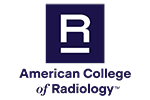Suspected Acute Aortic Syndrome
Acute aortic syndrome (AAS) is caused by abnormalities affecting the wall of the aorta. The aorta is the main blood vessel that carries blood from the heart to the rest of the body. People with AAS typically have sudden severe pain in the front or back of their chest. Risk factors include high blood pressure and family history. Rapid diagnosis of AAS is important to guide medical or surgical treatment and to avoid serious harm, including death.
For diagnosis of AAS, transesophageal echocardiograph; specialized ultrasound of the aorta; chest x-ray; MR angiography (MRA; MRI of arteries) chest or MRA chest, abdomen, and pelvis with and without intravenous (IV) contrast; CT chest or CT chest, abdomen, and pelvis without or without and with IV contrast; and CT angiography (CTA; CT scan of arteries) chest or CTA chest, abdomen, and pelvis with IV contrast are usually appropriate.
Other imaging examinations, such as transthoracic echocardiography; aortography chest; MRA chest or chest, abdomen, and pelvis without IV contrast; MRI chest, abdomen, and pelvis without IV contrast; CT chest without IV contrast; and CTA chest or coronary arteries with IV contrast, may be appropriate.
For more information, see the Abdominal Aortic Aneurysm (AAA) page.
— By Emily Hahn and Dianna M.E. Bardo, MD. This information originally appeared in the Journal of the American College of Radiology.
This page was reviewed on December 15, 2021


